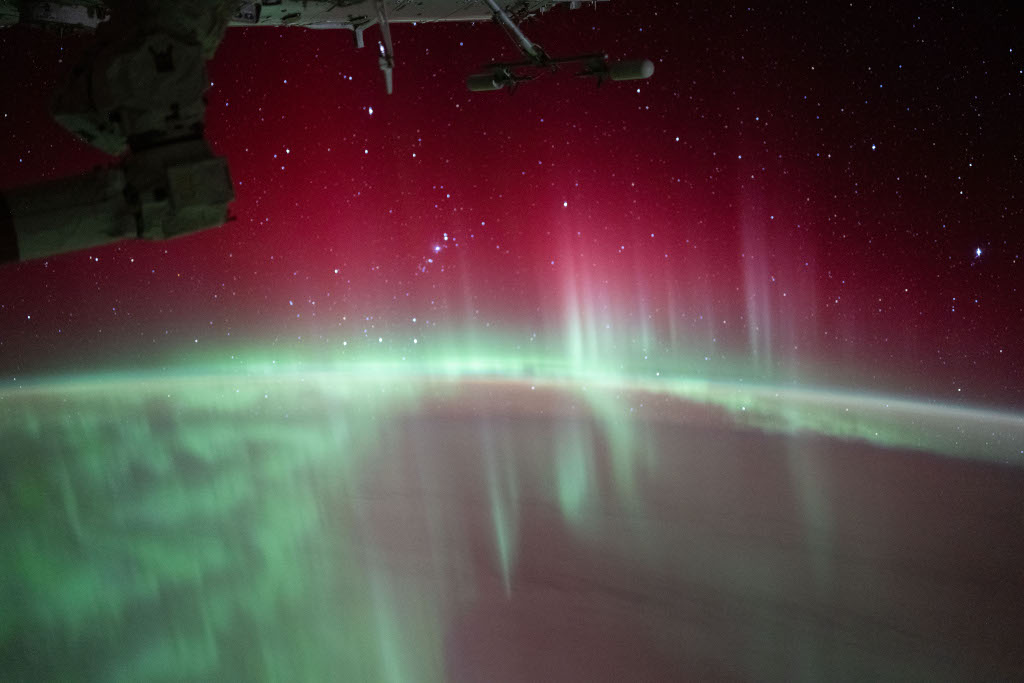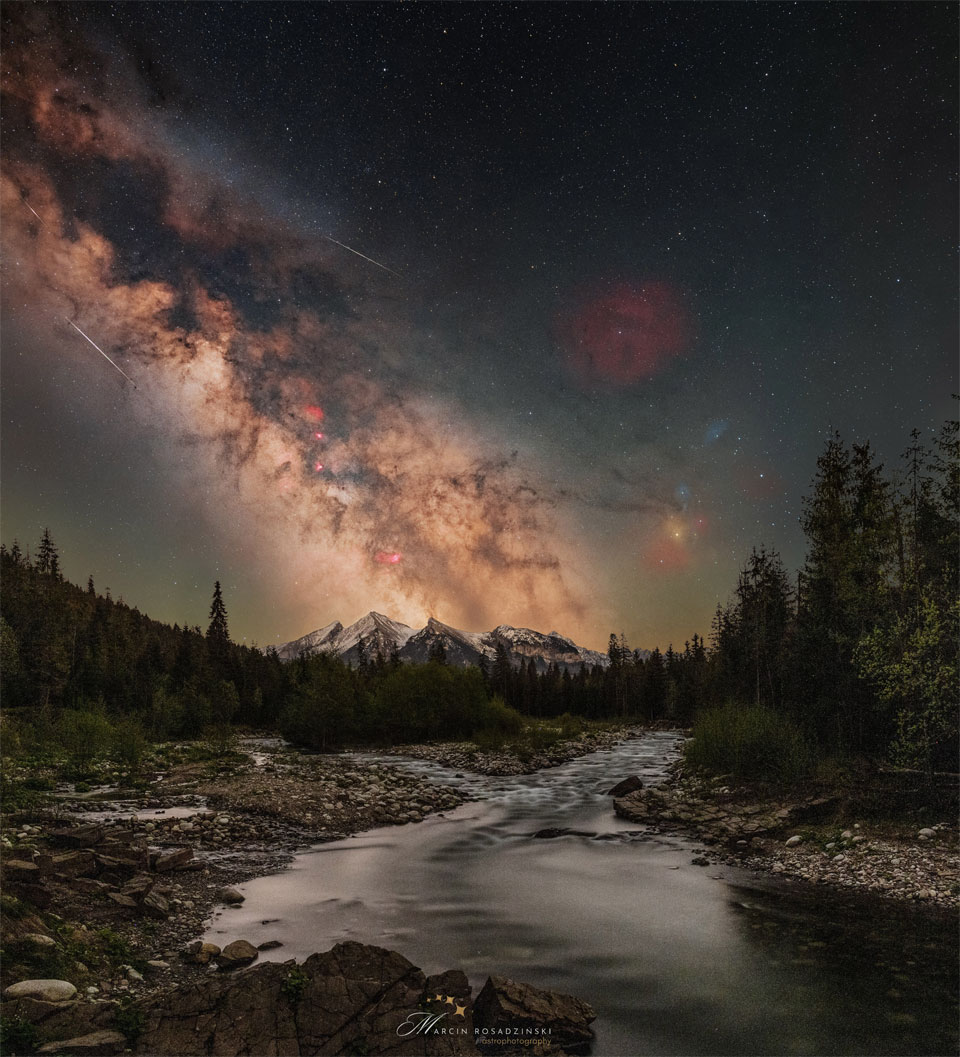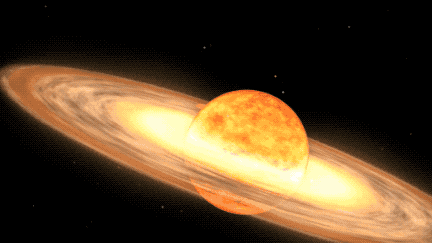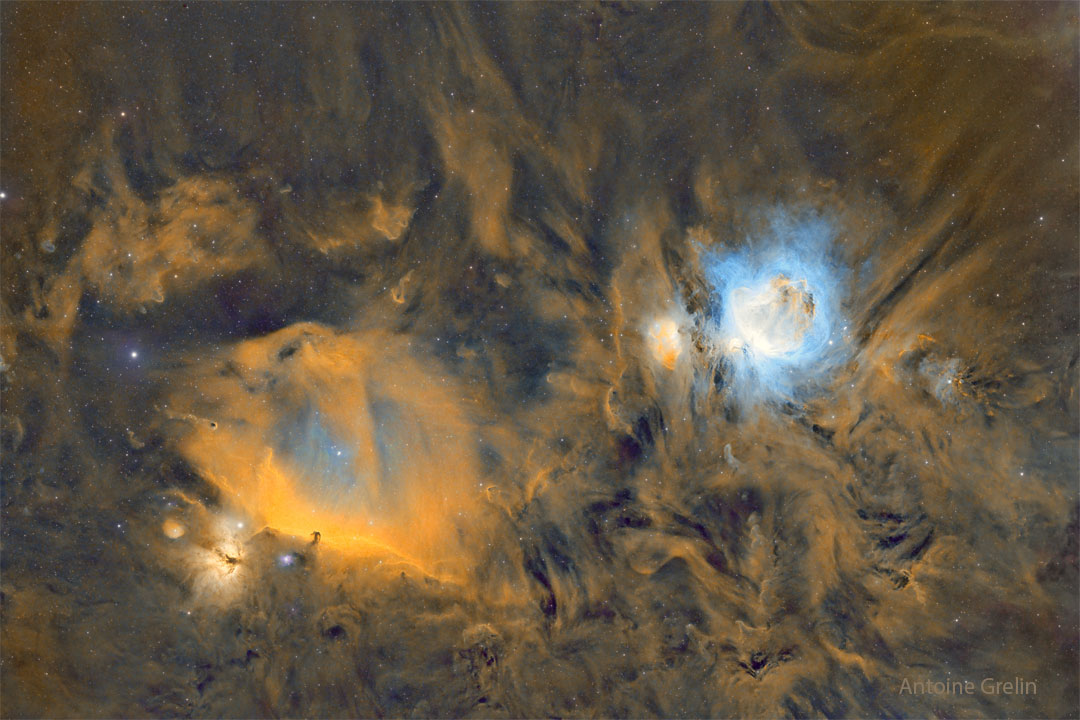Nombre total de pages vues
13/09/2024
PLANTES FASCINANTES - Rafflesia zollingeriana - la plus grande plante du monde
ASTRONOMY - Aurora Australis and the International Space Station
2024 September 13
Image Credit: NASA, ISS Expedition 71
Explanation: This snapshot from the International Space Station was taken on August 11 while orbiting about 430 kilometers above the Indian Ocean, Southern Hemisphere, planet Earth. The spectacular view looks south and east, down toward the planet's horizon and through red and green curtains of aurora australis. The auroral glow is caused by emission from excited oxygen atoms in the extremely rarefied upper atmosphere still present at the level of the orbiting outpost. Green emission from atomic oxygen dominates this scene at altitudes of 100 to 250 kilometers, while red emission from atomic oxygen can extend as high as 500 kilometers altitude. Beyond the glow of these southern lights, this view from low Earth orbit reveals the starry sky from a southern hemisphere perspective. Stars in Orion's belt and the Orion Nebula are near the Earth's limb just left of center. Sirius, alpha star of Canis Major and brightest star in planet Earth's night is above center along the right edge of the southern orbital skyscape.
INVENTIONS A L'HORIZON 2050 - Le robot ouvrier envahira les usines
12/09/2024
ASTRONOMY - Young Star Cluster NGC 1333
2024 September 12
Image Credit: ESA/Webb, NASA, CSA, A. Scholz, K. Muzic, A. Langeveld, R. Jayawardhana
Explanation: This spectacular mosaic of images from the James Webb Space Telescope peers into the heart of young star cluster NGC 1333. A mere 1,000 light-years distant toward the heroic constellation Perseus, the nearby star cluster lies at the edge of the large Perseus molecular cloud. Part of Webb's deep exploration of the region to identify low mass brown dwarf stars and free floating planets, the space telescope's combined field of view spans nearly 2 light-years across the dusty cluster's turbulent stellar nursery. In fact, NGC 1333 is known to harbor stars less than a million years old, though most are hidden from optical telescopes by the pervasive stardust. The chaotic environment may be similar to one in which our own Sun formed over 4.5 billion years ago.
11/09/2024
POISSONS EXOTIQUES - Le baliste clown
ASTRONOMIE NEWS - L’éclipse partielle de Lune du 18 septembre 2024

ASTRONOMY - A Night Sky over the Tatra Mountains
2024 September 11
Image Credit: Marcin Rosadziński; Text: Natalia Lewandowska (SUNY Oswego)
Explanation: A natural border between Slovakia and Poland is the Tatra Mountains. A prominent destination for astrophotographers, the Tatras are the highest mountain range in the Carpathians. In the featured image taken in May, one can see the center of our Milky Way galaxy with two of its famous stellar nurseries, the Lagoon and Omega Nebula, just over the top of the Tatras. Stellar nurseries are full of ionized hydrogen, a fundamental component for the formation of Earth-abundant water. As a fundamental ingredient in all known forms of life, water is a crucial element in the Universe. Such water can be seen in the foreground in the form of the Bialka River.
10/09/2024
PLANTES FASCINANTES - Hoya carnosa
ASTRONOMIE - Préparez-vous : une nouvelle étoile va apparaître dans le ciel d'un jour à l'autre !
ASTRONOMY - Horsehead and Orion Nebulas
2024 September 10
Image Credit & Copyright: Antoine & Dalia Grelin
Explanation: The dark Horsehead Nebula and the glowing Orion Nebula are contrasting cosmic vistas. Adrift 1,500 light-years away in one of the night sky's most recognizable constellations, they appear in opposite corners of the above stunning mosaic. The familiar Horsehead nebula appears as a dark cloud, a small silhouette notched against the long glow of hydrogen -- here shown in gold -- at the lower left. Alnitak is the easternmost star in Orion's belt and is seen as the bright star to the left of the Horsehead. Just below Alnitak is the Flame Nebula, with clouds of bright emission and dramatic dark dust lanes. The magnificent emission region, the Orion Nebula (aka M42), lies at the upper right. Immediately to its left is a prominent reflection nebula sometimes called the Running Man. Pervasive tendrils of glowing hydrogen gas are easily traced throughout the region.
SANTé/MEDECINE - Procédé révolutionnaire dans la lutte contre le cancer - 2/6 : Une découverte qui change tout
Jusqu’à présent, la lutte contre le cancer reposait principalement sur la chimiothérapie, la radiothérapie ou la chirurgie. Ces traitements,...

-
2022 September 26 All the Water on Planet Earth Illustration Credit: Jack Cook, Adam Nieman, Woods Hole Oceanographic Institution ; Data ...
-
La majorité des grêlons qui tombent sous les orages et les averses ne pèsent que quelques grammes. Mais il y a quelques années, c'est un...









